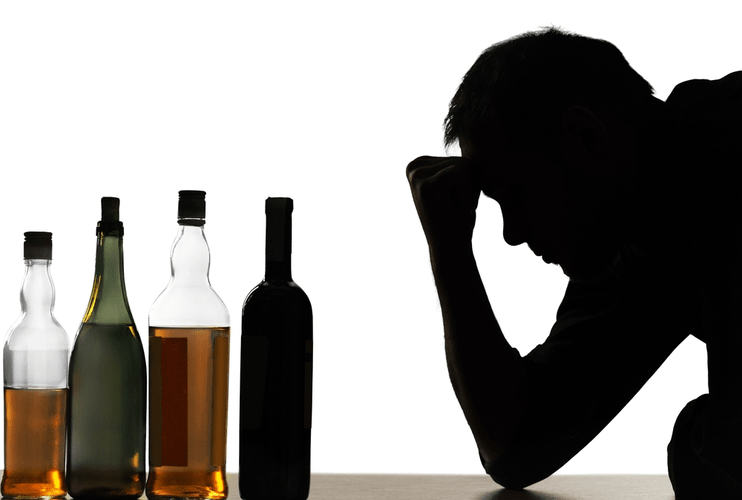Content
A smaller percentage compared to those reported by other studies in which the percentage of people that saw drink-driving as a major threat to safety reached 81% [15]. On a scale of 0-10, participants rated the risk of economic penalties when driving under the influence of the alcohol with an average of 5.2, in other words they estimate the probability of being fined as roughly half of the times one drives drunk. Driving while under the influence of alcohol or drugs can risk your life and the lives of others, and it can send you to jail. If you are under 21, it is illegal for you to drive with any detectable amount of alcohol in your system.
Drunk drivers endanger themselves and everyone on the road, increasing the risk of automobile crashes and deaths. To reduce alcohol-related fatal crashes among youth, all states have adopted a minimum legal drinking age of 21. NHTSA estimates that minimum-drinking-age laws have saved 31,959 lives from 1975 to 2017.
Driver BAC and Crash Characteristics
Publicized sobriety checkpoints (Castle et al. 1995; Lacey et al. 1999; Shults et al. 2001) and comprehensive community education and enforcement programs (Hingson et al. 1996; Holder et al. 2000) have also been found to reduce alcohol-related fatal and injury crashes. Being able to see clearly is massively important when driving, and excessive alcohol consumption can cause problems with your vision. Drinking may cause your vision to blur, or cause your eyes to move on their own. This vision impairment can influence how you are able to judge the distance between your car and other vehicles or objects on the road. If you or someone you care about is battling an alcohol addiction, seek help.

In some countries, non-profit advocacy organizations, a well-known example being Mothers Against Drunk Driving (MADD) run their own publicity campaigns against drunk driving. Further analyses of that survey revealed that even after controlling for history of alcohol dependence, those who started drinking at younger ages were more likely to drink heavily (five or more drinks per occasion) with greater frequency (Hingson et al. 2000). Moreover, the younger people were when they began drinking, the greater their likelihood of driving after drinking too much and of being in motor vehicle crashes because of drinking (based on self-report). Those who started drinking before age 14 were seven times more likely to have been in a drinking-related motor vehicle crash at any time in their lives (14 percent vs. 2 percent) and in the past year (0.7 percent vs. 0.1 percent) (Hingson et al. 2002). Because the average age of respondents in the survey was 44, these findings indicate that those who start drinking at an early age are more likely to be in alcohol-related motor vehicle crashes during both adolescence and adulthood. Although a smaller percentage of 16- to 20-year-old drivers drive after drinking compared with older drivers, when they do so, 16- to 20-year-olds consume more alcohol before driving.
Struggling With Porn Addiction?
Despite the high volume of drunk driving episodes, only a small percentage of impaired drivers are arrested. Pennsylvania’s Zero Tolerance Law carries serious consequences for those under 21 who are convicted of driving with any amount of alcohol in their blood. For example, those under 21 who are convicted of driving under the influence with a .02 blood alcohol content, or greater, face severe penalties, including a 12-to 18-month license suspension, 48 hours to six months in jail, and fines from $500 to $5,000.
Vehicles can include farm machinery and horse-drawn carriages, along with bicycles. Other commonly used terms to describe these offenses include drinking and driving, drunk driving, drunken driving, impaired driving, operating under the influence, or “over the prescribed limit”. Despite https://editorialeyes.net/tag/literary-fiction/ marked reductions in the proportions of motorists who drive after drinking and in alcohol-related traffic fatalities, alcohol-impaired driving remains a serious threat to the nation’s health. In 2002, 41 percent of traffic deaths and 9 percent of traffic injuries were alcohol related.
The Consequences of DUI or DUID:
Finally, fatally injured drivers with BACs of 0.15 percent or higher were much more likely than those with no BAC to be driving from bars (26 percent vs. 0 percent) or from restaurants or other people’s homes (34 percent vs. 22 percent). The percentage of traffic deaths that are alcohol related also varies depending on the role of the person killed in the crash (i.e., whether the person killed was the driver, passenger, or pedestrian) and by the type of vehicle involved. In 2002, 41 percent of the drivers killed in crashes were killed in alcohol-related crashes, compared with 37 percent of passenger deaths and 47 percent of pedestrian deaths. Of all pedestrian deaths, 17 percent involved a driver who had been drinking and 38 percent involved a pedestrian who had been drinking. In 7 percent of pedestrian deaths, both the driver and the pedestrian had been drinking (NHTSA 2003f ).
- Tools like Roadwise Rx, a free, web-based tool developed by the AAA Foundation for Traffic Safety that anyone can use to explore how medications may affect safe driving.
- Likewise, 49 percent of drivers in alcohol-related fatal crashes were ages 21 to 45, and this age group makes up 35 percent of the population.
- Treatment providers are available 24/7 to answer your questions about rehab, whether it’s for you or a loved one.
- These devices work by requiring the driver to blow into it before starting the vehicle.
- Continuing to drink in spite of a DUI conviction or a stint in jail is often a telltale sign of addiction.
Trends in number of alcohol-related traffic fatalities for different BACs, 1982 through 2002. Traffic deaths involving people with BACs up to 0.08 percent had the smallest proportional decline (19 percent) from 1982 through 2002. The percentage of drivers with BACs of 0.10 percent or higher declined from 3.0 to 1.5 percent among females and from 5.5 percent to 3.5 percent among males. Among White drivers, the proportion with positive BACs declined from 5.1 to 2.3 percent. Among African American drivers, the proportion with positive BACs declined from 6.0 to 3.6 percent. By contrast, the proportion of Hispanic drivers with positive BACs increased from 3.3 to 7.5 percent.
Driving habits
Drinking and driving increases the risk of accidents due to impaired motor skills, less concentration, slow reaction times, decreased vision, and poor judgment. These side effects put the driver, potential passengers, other vehicles, and pedestrians at risk. Nearly 30% of motorcyclists who died in accidents in 2014 had blood alcohol concentrations above the legal limit.4 The age range of motorcyclists who are most often killed in alcohol-related crashes is years of age. The reality is that operating a motor vehicle requires the driver to be fully attentive, alert and able to react quickly to changes in the environment.
There are some reports that refusal to submit to an SFST can result in the same penalties as impaired driving. (A) a regulated drug as defined in 18 V.S.A. § 4201; or
(B) any substance or combination of substances, other than alcohol, which affects the nervous system, brain, or muscles of a person so as to impair, noticeably and appreciably, a person’s ability to drive a vehicle safely. Working with our partners - Prescription and over-the-counter (OTC) medication use has become a big issue in the last few years. Eight out of ten senior drivers age 65 and older take medications on a regular basis. Tools like Roadwise Rx, a free, web-based tool developed by the AAA Foundation for Traffic Safety that anyone can use to explore how medications may affect safe driving. Convicted drunk drivers are subject to a $1,000 penalty for two consecutive years under the Driver Responsibility Act, for a total of $2,000 in additional costs.
How Many Overall Traffic Fatalities Involve Drunk Drivers?
In the United States, roughly 28 people die every day in motor vehicle crashes that involve an alcohol-impaired driver. In 2020, 11,654 Americans http://karaokeplus.ru/?paged=5&cat=4 were killed in alcohol-impaired driving crashes. Alcohol-related accidents accounted for nearly one-third of all traffic-related deaths.
How much alcohol is too much?
Heavy drinking includes binge drinking and has been defined for women as 4 or more drinks on any day or 8 or more per week, and for men as 5 or more drinks on any day or 15 or more per week.

